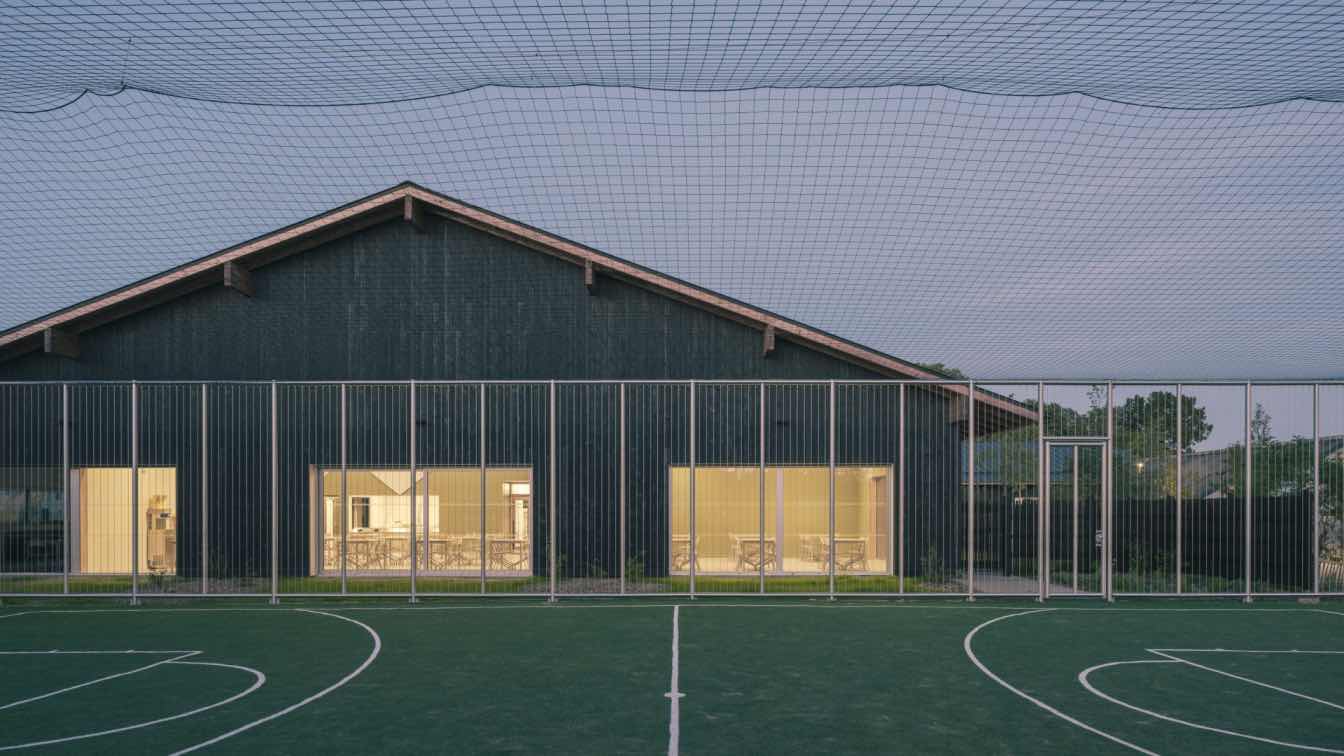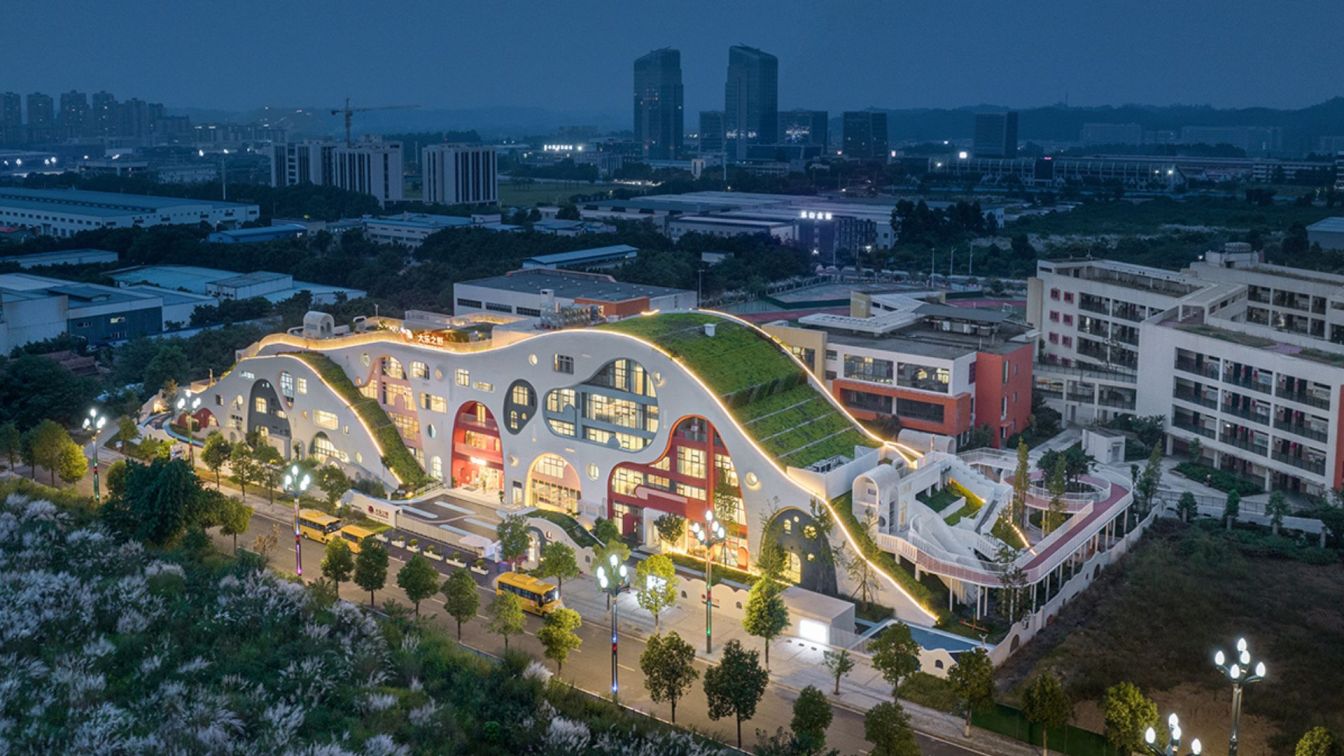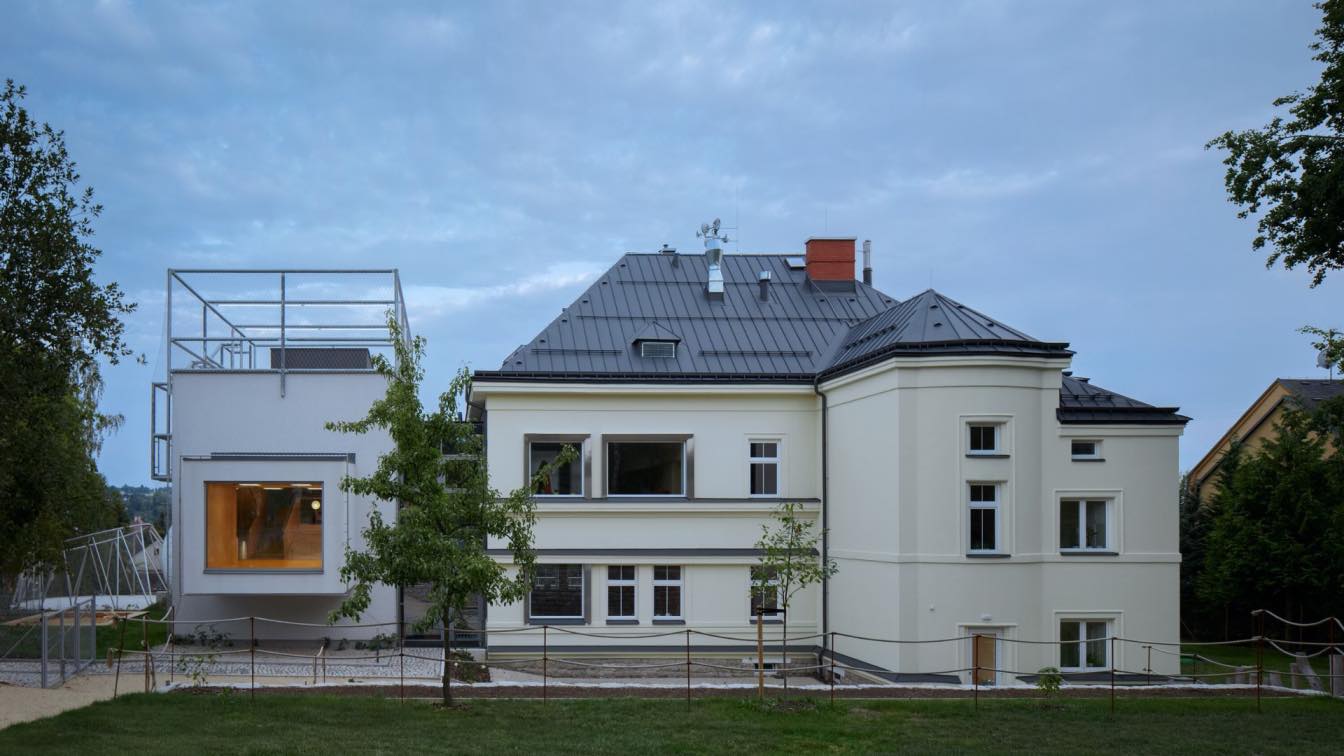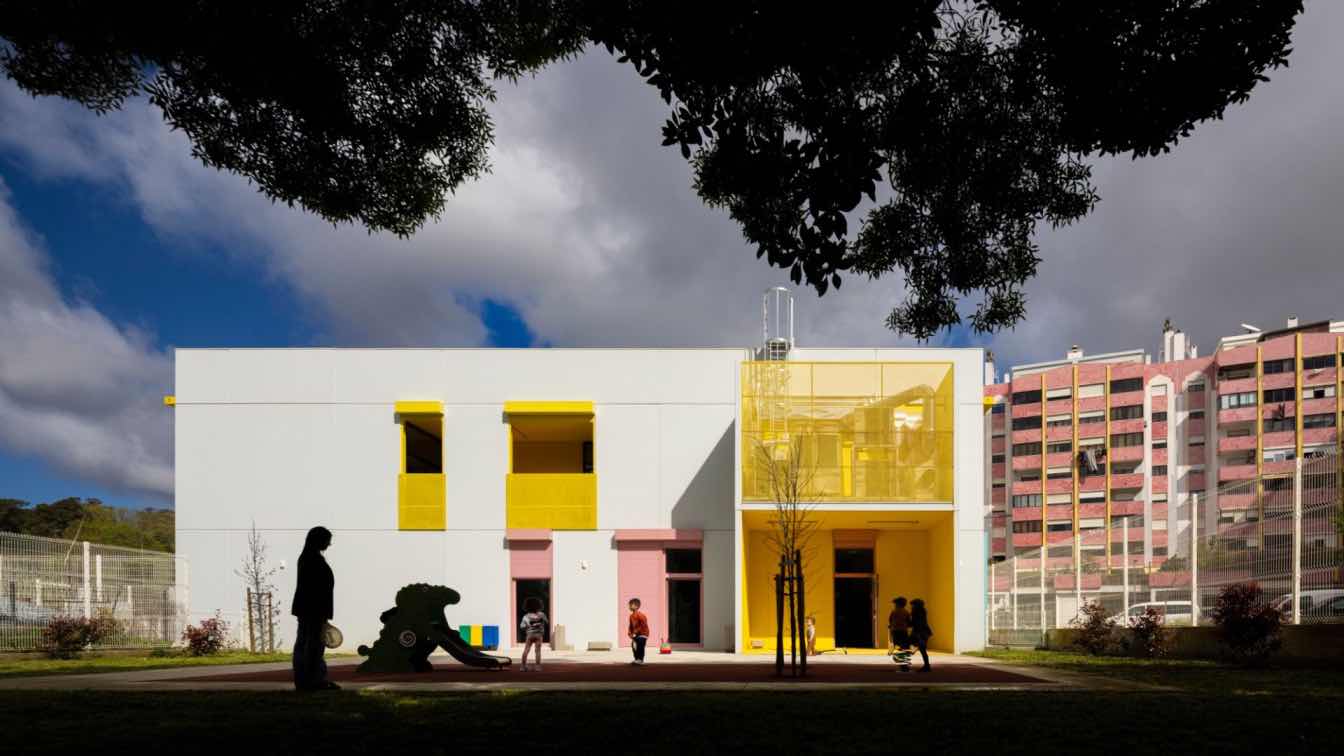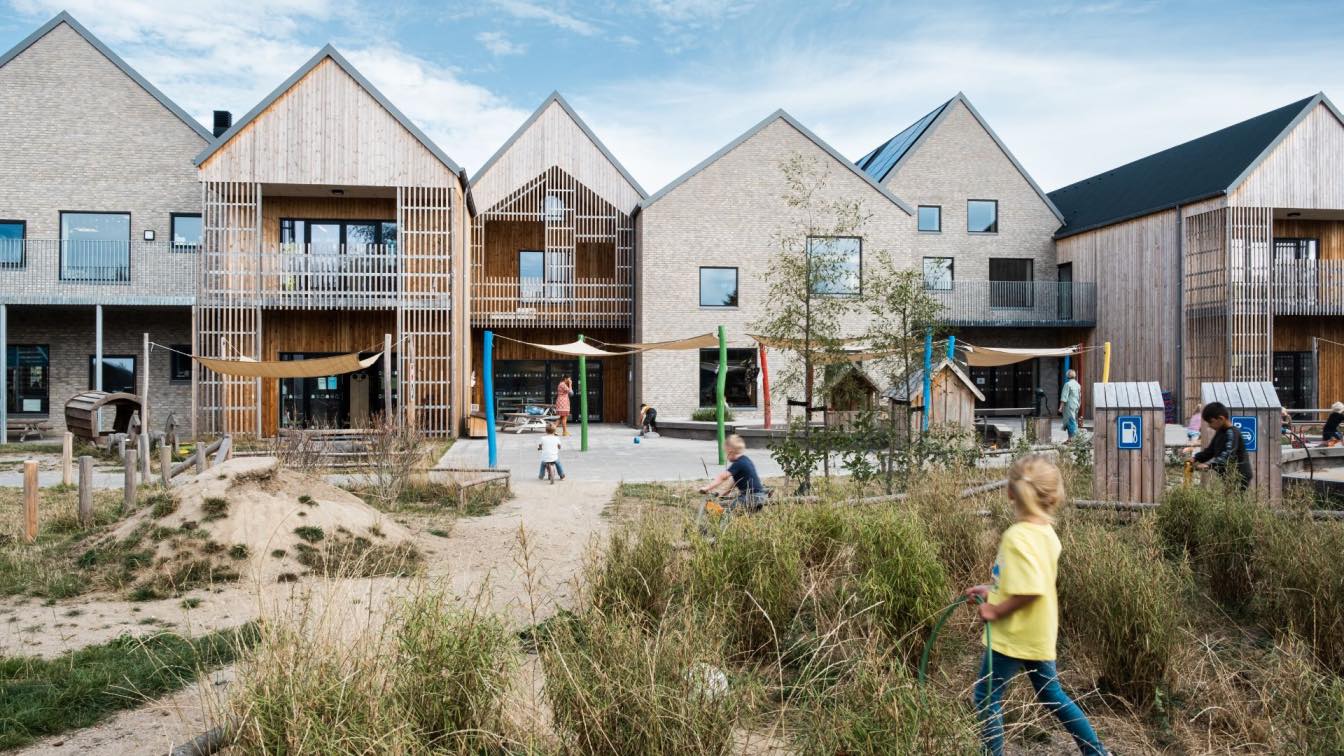CONTEXT
In Tours, the Jean de la Fontaine school has undergone a complete makeover at the hands of the ALTA agency. Initiated by the municipality at the end of 2020, the call for tenders aimed at the demolition and reconstruction of this establishment built in the 1960s. In the northeast of the city, in a rapidly changing neighborhood, the existing school was part of a complex urban fabric characterized by a great heterogeneity of scales and building types. In addition to making the establishment and its surroundings more legible, ALTA's project is a true homage to the architectural and natural heritage of the Loire region. The territory of Tours, traversed by the Loire and Cher rivers, is indeed marked by a strong vegetal presence: wooded hillsides, parks and landscaped areas, private and family gardens... This heritage, along with the layouts of the green and blue networks, forms one of the common threads that led the architects throughout this requalification project. Initiated in December 2022, the construction work was completed in April 2024 with the renovation of the existing gymnasium. In collaboration with the FAAR Paysage, landscapers, new outdoor spaces were designed, combining ecological management and biodiversity enhancement with the intended outdoor uses for the schoolchildren.
A SENSITIVE INSTALLATION
Inspired by the plurality of constructions characterizing the region, from the gabarres sailing on the Loire to the sheds flourishing in family gardens, the architects of ALTA design this new school as a refuge. The imagery of the cabin is imposed both for its evocative power and for the suggested proximity to a wild environment. This dreamlike built figure is reflected in the volumetry of the three building bodies housing the dining area, classrooms, and gymnasium, respectively. Their horizontality, low roof ridges, and unique formal features—sometimes overlapping, sometimes roof overhangs—shape the silhouette of the facility, making it stand out from the street. Set on a narrow, elongated plot, the Jean de la Fontaine school now covers an area of 1948 m².
The implementation of the project combines the requirements of the program with a genuine desire to deepen the links established between the school and its landscape context. This conceptual intention is seen in a triptych as one progresses through the building, with the first part embodied by the forecourt. At the school's entrance, the forecourt serves the dual role of a welcoming space for the students and a public space open to parents and all local residents. Its rational design and generous dimensions facilitate multiple uses and provide a reassuring setback from Rue du Colombier. Next comes the teaching building, whose educational program, as shown on the floor plan, is complemented by an early-learning dimension. The interplay of openings and elevations offers views of the surrounding environment and landscape, whether near or far.
Moreover, the school acts as a bridge between two outdoor spaces, allowing for a gradual transition to intimacy—from the public forecourt to the protective enclosure of the playground. This playground, set back from the street and its nuisances, forms the last panel of the triptych. Designed as a play and relaxation area, it is also a fertile ground, both stimulating and educational. In contrast to the forecourt, its layout combines organic forms with a strong vegetal presence, highlighting the existing trees.

ARCHITECTURE IN THE SERVICE OF USER COMFORT
The composition of the school in a broken line defines distinct uses by associating them with specific time frames; it also allows the interior spaces to benefit from cross-exposures to thesoutheast and northwest. The image of the cabin is once again reflected in the use of simple materials such as straw and wood. Central to ALTA's construction concerns is a great consideration for the comfort and well-being of both young and adult users. Non-polluting, bio- based, free from volatile organic compounds, sourced locally, promoting the circular economy and prefabrication... From the building materials to the finishing elements and insulators, the products used have been rigorously sourced to align with the requirements of sustainable development and the main principles of bioclimatic design.
These joint intentions for a virtuous construction site and an allusion to the cabin symbol demonstrate an architectural approach that is both technical and sensitive. Thus, for the first time in Tours, the structural work with a wooden frame is combined with straw insulation. This modest yet subversive insulation method sets the facility apart from standardized construction by emphasizing the uniqueness of its conceptual approach. The selected Northern Pine for the vertical cladding elements echoes certain constructions in this diverse neighborhood. Thermally treated and stained to enhance its durability and anticipate its aging, the wood has a dark hue chosen for its convective properties, which will help warm the interior spaces during the cold season. The slender lines of the roof overhangs above the forecourt and courtyard form the first shelter against natural elements, whether rain or sunlight. In summer, the roof overhangs combine with the vegetation to protect the facades and their large windows from prolonged sun exposure. The dimensions of these windows, made possible by their discreet and efficient aluminum frames, benefit the classrooms, which enjoy high-quality light and exceptional views of the natural landscapes designed by the landscapers.
In terms of climate engineering, the architects and their team opted for biomass energy by equipping the school with a wood-fired boiler. To cool the classrooms in case of overheating, simplicity once again prevails over technology: natural ventilation is favored on the upper floor of the educational building. By combining a well-thought-out layout with a low-tech wood and straw envelope, and by promoting renewable energies and bio-based materials, the Jean de la Fontaine school in Tours stands as an example and pioneer in terms of sobriety and construction economy. Thanks to these qualities and the project's honest approach, the project has been included in the scope of the E+C- label with a deserving score: positive energy 3 and carbon reduction 1.






























